
The Italian Navy is one of the four branches of Italian Armed Forces and was formed in 1946 from what remained of the Regia Marina after World War II. As of August 2014, the Italian Navy had a strength of 30,923 active personnel, with approximately 184 vessels in service, including minor auxiliary vessels. It is considered a multiregional and a blue-water navy.

The Regia Marina (RM) or Royal Italian Navy was a navy of the Kingdom of Italy from 1861 to 1946. In 1946, with the birth of the Italian Republic, the Regia Marina changed its name to Marina Militare.

The Corps of the Port Captaincies – Coast Guard is the coast guard of Italy and is part of the Italian Navy under the control of the Ministry of Infrastructure and Transport. Its head office is in Rome.

The Macchi M.5 was an Italian single-seat fighter flying boat designed and built by Nieuport-Macchi at Varese. It was extremely manoeuvrable and agile and matched the land-based aircraft it had to fight.

Alessandro Guidoni served as a general in the Regia Aeronautica. Guidonia Montecelio, the small town and comune where he died while testing a new parachute, was named after him in 1937.
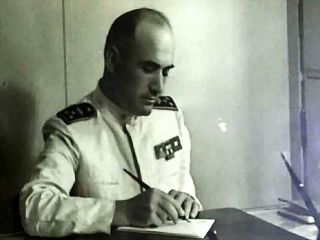
Adone Del Cima was an officer of Regia Marina, the first and only commander of the battleship Roma.

The Liuzzi class was a class of four submarines built by Tosi in Taranto for the Royal Italian Navy. The submarines were built in 1939 and began their Second World War service in the Mediterranean Sea, where Liuzzi was sunk. The three surviving boats were transferred to the BETASOM Atlantic submarine base at Bordeaux in 1940. After Tarantini was sunk, Bagnolini and Giuliani were selected for conversion to "transport submarines" in order to exchange rare or irreplaceable trade goods with Japan. Cargo capacity of 160 tons reduced reserve buoyancy from between 20 and 25% to between 3.5 and 6%; and armament was reduced to defensive machine guns. The submarines saw action in the Second World War during which they collectively sunk 5 freighters and 1 light cruiser and were eventually either sunk or captured.
Pietro Calvi was the lead ship of its class of two submarines built for the Regia Marina during the 1930s. Completed in 1936, she played a minor role in the Spanish Civil War of 1936–1939 supporting the Spanish Nationalists. The submarine made multiple patrols in the Atlantic Ocean during the Second World War, sinking seven Allied ships. Pietro Calvi was rammed and sunk by a British convoy escort in July 1942.
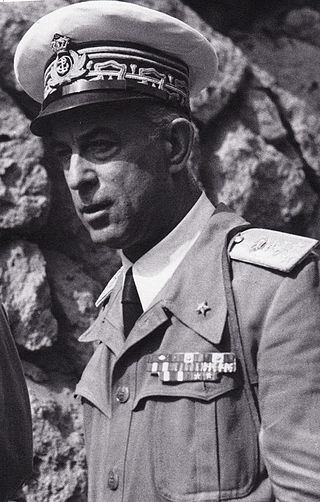
Gino Pavesi was an Italian admiral during World War II.

Vittorio Tur was an Italian admiral during World War II.
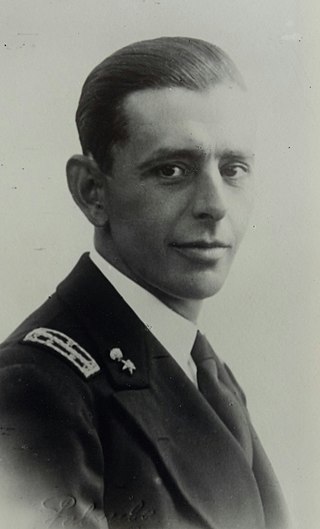
Pietro De Cristofaro was an Italian naval officer during World War II.

Luigi Faggioni was an Italian naval officer during World War II, and an admiral in the postwar Marina Militare.

Bruto Brivonesi was an Italian admiral during World War II.

Giuseppe Di Bartolo was an Italian naval officer during World War II.

The Military Corps of the Sovereign Military Hospitaller Order of Saint John of Jerusalem of Rhodes and of Malta, is a voluntary auxiliary body of the Italian Army for health and humanitarian assistance.
The following is the structure of the Italian Navy as of June 2020. It is considered a multiregional and a blue-water navy.

Ettore Sportiello was an Italian admiral during World War II.

The Ministry of the Navy was a ministry of the Kingdom of Italy from 1861 to 1946 and of the Italian Republic from 1946 to 1947. Under the Kingdom of Italy, it oversaw the Regia Marina, while under the Italian Republic, when its name became Ministero della marina militare, it oversaw the Marina Militare. The ministry was abolished in 1947, when it merged with the Ministry of Aeronautics and the Ministry of War to form the Ministry of Defence.
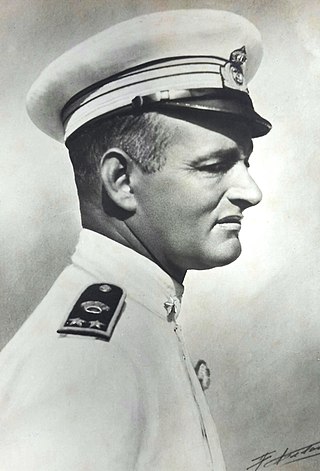
Primo Longobardo was an Italian naval officer and submariner during World War II.
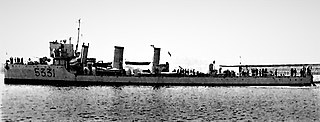
Giacinto Carini was an Italian La Masa-class destroyer. Commissioned into service in the Italian Regia Marina in 1917, she served in World War I, participating in the Adriatic campaign. During the interwar period, she took part in operations during the Corfu incident in 1923 and was reclassified as a torpedo boat in 1929. She took part in the Mediterranean campaign of World War II. After the fall of Fascist Italy and the Italian armistice with the Allies in 1943, she switched to the Allied side and operated as a unit of the Italian Co-belligerent Navy until 1945. A part of the Italian Navy after the Italian Republic replaced the Kingdom of Italy in 1946, she remained in service during the Cold War and was reclassified as a coastal minesweeper in 1953. Stricken in 1958, she subsequently served as the training hulk GM 517 until scrapped in 1963.

















